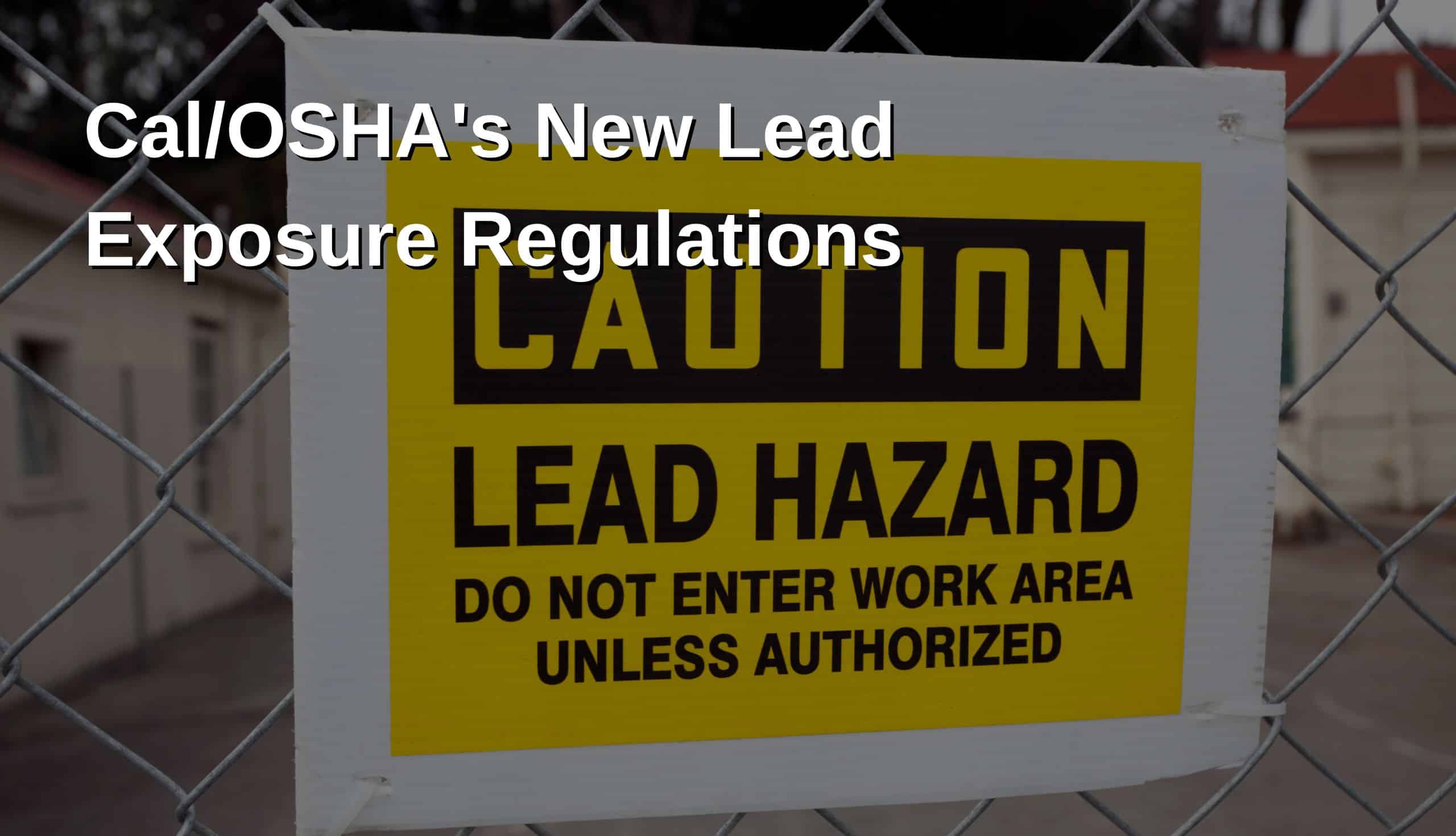
Key Components of the New Regulations:
- Lowering Permissible Exposure Limits (PELs)/Action Levels: Cal/OSHA has reduced the permissible exposure limits for lead, reflecting updated scientific insights into its health effects. This reduction aims to minimize exposure levels and safeguard workers’ health.
- Old Permissible Exposure Limit: 50 micrograms per cubic meter of air
- New Permissible Exposure Limit: 10 micrograms per cubic meter of air
- Old Action Level: 30 micrograms per cubic meter of air
- New Action Level: 2 micrograms per cubic meter of air
- Expanded Requirements for Monitoring and Testing: The updated regulations mandate more extensive monitoring and testing procedures to accurately assess lead exposure levels. Employers are now obligated to conduct regular air monitoring, biological monitoring, and surface sampling to ensure compliance with revised PELs.
- Enhanced Training and Education Programs: Recognizing the critical role of education in preventing lead exposure, Cal/OSHA now requires employers to provide comprehensive training programs. These programs should cover topics such as the health effects of lead, proper handling procedures, and the use of personal protective equipment (PPE).
- Implementation of Engineering Controls: Employers are encouraged to prioritize engineering controls to minimize lead exposure, including ventilation systems and containment measures. These controls aim to mitigate exposure risks at their source, complementing other protective measures.
- Emphasis on Personal Protective Equipment (PPE): In cases where engineering controls alone are insufficient, employers must provide appropriate PPE to workers. This includes respirators, protective clothing, gloves, and eye protection designed to minimize exposure to lead particles.
- Medical Surveillance Requirements: Cal/OSHA’s regulations now include stricter medical surveillance requirements for workers exposed to lead. Employers must provide access to regular medical evaluations, including blood lead testing, to monitor workers’ health. Additionally, these programs should include education on the health effects of lead exposure and measures for preventing further exposure.
In a continuous endeavor to prioritize worker safety, California’s Division of Occupational Safety and Health (Cal/OSHA) has recently rolled out a comprehensive set of regulations addressing occupational lead exposure. Lead, a hazardous metal found in various workplace materials such as paints, batteries, and soldering materials, poses severe health risks, from neurological issues to reproductive complications. Recognizing these dangers, Cal/OSHA has revised its standards, aiming to provide robust guidelines for both employers and employees.
The approval of these revisions by the California Occupational Safety & Health Standards Board on February 15, 2024, represents a significant milestone in workplace safety. These changes, slated to be effective from January 1, 2025, mark a pivotal shift in safeguarding workers across multiple sectors, including construction and general manufacturing.
Understanding the Scope:
Cal/OSHA’s new regulations affect employers differently based on their industry. For instance, those in the construction sector are governed by 8 C.C.R. section 1532.1, while general industry employers must adhere to 8 C.C.R. section 5198. These sections delineate specific responsibilities and standards aimed at mitigating lead exposure risks within workplaces.
Key Revisions:
Among the most notable revisions are the significant reductions in thresholds triggering various requirements for employers. The Permissible Exposure Limit (PEL) and Action Level (AL) have been dramatically lowered, emphasizing the urgency of tighter regulations to shield workers from lead exposure risks.
Implications for Employers and Workers:
Compliance with Cal/OSHA’s new regulations is not only a legal obligation but also a moral responsibility for employers. Failure to adhere to these regulations can result in severe penalties and expose workers to unnecessary health risks. On the other hand, workers should actively engage in training programs, adhere to safety protocols, and communicate any concerns regarding lead exposure to their employers.
In conclusion, Cal/OSHA’s new regulations for occupational lead exposure represent a significant advancement in worker protection. By prioritizing lower exposure limits, enhanced monitoring, comprehensive training, and effective control measures, these regulations aim to create safer workplaces where employees can thrive without compromising their health. Collaboration between employers, workers, and regulatory authorities is crucial to ensuring the successful implementation of these regulations and promoting a culture of safety in every workplace.
For any other questions or concerns regarding Lead, contact A-Tech today by clicking here.


